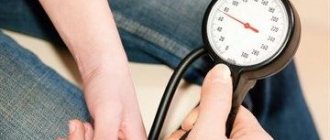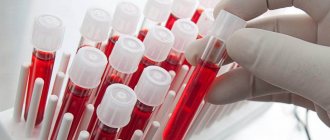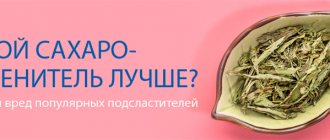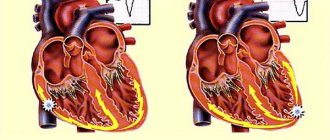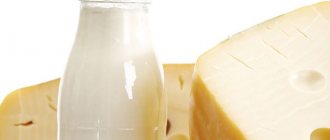The introduction of drugs into the heart cavity through the chest can be used only in exceptional cases, namely in a complex of resuscitation measures in case of cardiac arrest. Most often, adrenaline is used for this purpose.
But since this method does not have any great advantages over conventional injection into a vein, causes many complications, and also requires stopping cardiac massage to implement it, it is no longer widely used.
Effect of adrenaline on the heart
Adrenaline is one of the most powerful cardiac stimulants. Its effects are associated with interaction with beta1 receptors. Under the influence of this drug, the following changes in cardiac activity occur:
- heart rate increases;
- the force of contraction and the volume of blood ejected from the ventricles increases;
- oxygen uptake by the myocardium increases;
- the excitability of the heart muscle and signal transmission increases;
- the duration of systole decreases, and the time of diastole remains unchanged;
- the pacemaker may change;
- when exposed to high doses, as well as when combined with anesthetics, ventricular extrasystoles may appear;
- reduces the manifestations of blockade of pathways.
ECG before and after injection of adrenaline into the heart.
When administered intravenously or intracardiacly, myocardial cell death may occur, and the risk of ventricular fibrillation increases. Therefore, the use of Adrenaline should only be under control of the heart rhythm. In the presence of hypoxia, rhythm disturbances are observed more often. In this regard, the drug cannot be administered without prior respiratory resuscitation.
We recommend reading the article about vitamins for the heart. From it you will learn about vitamins necessary for the heart and blood vessels, effective medications prescribed by doctors.
And here is more information about what to take for heart pain.
When is an intracardiac injection given?
Intracardial administration of medications can be done to increase the effectiveness of resuscitation measures in case of clinical death. This method is usually used if, after 3 - 5 minutes from cardiac arrest, external massage does not lead to the start of cardiac activity. Contraindications for intracardiac injections include trauma or injury to the heart.
Heart massage should not be interrupted for more than 10 - 15 seconds. Therefore, to carry out an injection you need to be proficient in this method. Anesthesia for puncture while contractions are stopped is not used.
What injections are given into the heart?
Most often, Adrenaline solution is used in complete asystole to restore myocardial contractility and increase pressure. The maximum single dose is 1 ml, and the daily dose is no more than 5 ml. In addition, the doctor can perform the following injections:
- Atropine solution 0.1% 0.5 ml to reduce the tone of the parasympathetic system, improve conductivity and increase heart rate.
- Calcium chloride 5 ml 10% to increase myocardial excitability and accelerate impulse conduction, prolonging the time of systolic contraction.
Instead of Adrenaline, it is possible to administer Noradrenaline, as well as a mixture: 1 ml of Adrenaline and Atropine, 10 ml of Calcium chloride and isotonic solution. First use half the mixture, and after 10 minutes the injection can be repeated.
For ventricular fibrillation, an injection of Adrenaline in combination with Novocaine is indicated.
If there has been an overdose of cardiac glycosides, and transesophageal electrical stimulation has not produced results, then for medicinal defibrillation, an intracardiac injection with 10 ml of Panangin can be performed.
results
Of the 163 patients examined, 106 were not included in the study mainly due to the presence of signs of dying (n=34), circulatory arrest accompanied by early signs of cerebral anoxia (n=30), and early signs of the need for PVEM (n=22). In total, 57 patients were included in the study: 27 and 30 patients in the epinephrine group and norepinephrine group, respectively. With the exception of differences in gender composition, there were no significant differences between the 2 groups. Before inclusion in the study, 41 and 60% of patients, respectively, were successfully resuscitated after circulatory arrest in the epinephrine group and norepinephrine group, respectively (p=0.19). When included in the study, 98% of patients underwent artificial ventilation.
All patients included in the study underwent successful emergency myocardial revascularization using PCI, by the end of which a blood flow corresponding to grade 3 according to the TIMI (Thrombolysis In Myocardial Infarction) classification was achieved. The groups did not differ in the frequency of SSP use. A balloon for intra-aortic balloon counterpulsation after PCI in the epinephrine group and norepinephrine group was installed in 59 and 50% of patients, respectively (p=0.60). None of the patients developed mechanical complications of AMI.
In an analysis based on the assumption that all patients received the prescribed treatment, and taking into account data on patients who died or patients who required implantation of devices for PVEM as the least favorable outcome, the main effectiveness indicator (change in CI) was not statistically significantly different between the epinephrine group and the norepinephrine group (p=0.43). However, based on data obtained at hours 2 and 4, there was a short-term increase in CI in the epinephrine group compared to the norepinephrine group (p = 0.011 and 0.036, respectively). At the same time, in the epinephrine group compared to the norepinephrine group, there was a statistically significant increase in the main safety indicator (the incidence of treatment-resistant shock): such outcomes were observed in 37 and 7% of patients, respectively (p = 0.011). Given the increased incidence of treatment-resistant shock in the epinephrine group, the data and safety monitoring committee decided to terminate the study early. It should be noted that this adverse outcome was not intended to be assessed as a primary safety outcome when the study was designed. However, the development of treatment-resistant shock was systematically monitored throughout the study and began to be carefully assessed after receiving information from the observation team about an unexpected increase in the incidence of this outcome during the 1st year after the start of the study. Therefore, although this outcome was not determined before the study began, it was determined during the course of the study.
The doses of study drugs that needed to be administered to achieve a MAP of 70 mm Hg in the epinephrine group and norepinephrine group were 0.7 ± 0.5 and 0.6 ± 0.7 μg/kg/min, respectively (p = 0 ,66). There were no statistically significant differences between the groups in the duration of use of SSP (p = 0.15), doses of SSP at different points (from hour 0 to hour 72; p = 0.66), as well as in the maximum dose of SSP (p = 0, 79). Changes in systolic BP, diastolic BP and MAP during the first 3 days after study entry were similar in both groups (p=0.11, 0.13 and 0.80, respectively).
In the epinephrine group, heart rate increased statistically significantly, while in the norepinephrine group, heart rate did not change statistically significantly (p = 0.031 for comparison between groups). There were no statistically significant differences between the groups in changes in the stroke volume index and IMI (p=0.25 and 0.064, respectively). The double product (an indirect measure of myocardial oxygen consumption) increased in the epinephrine group and did not change in the norepinephrine group. The venous-arterial gradient of partial pressure of carbon dioxide (pCO2) was similar in the epinephrine group and the norepinephrine group (p=0.59). In both groups, there was a progressive decrease in the average index of systemic vascular resistance (SIVR) in the absence of statistically significant differences between groups in this indicator (p = 0.44).
Mean PA and PAPA pressures were similar in both groups (p=0.48 and 0.38, respectively). In addition, both groups showed a similar progressive increase in LVEF (p=0.87).
The results of the analysis of the frequency of PPID use showed that the frequency of dobutamine use in the epinephrine group and norepinephrine group was similar and reached 67% (p = 0.99). The mean duration of dobutamine use in the epinephrine group was 22 hours (range, 7 to 72 hours) and in the norepinephrine group, 90 hours (range, 63 to 161 hours; p=0.0009 for comparison between groups). There were no statistically significant differences between groups in the frequency of dobutamine use at certain points in the study (from hour 0 to hour 72; p=0.78) and the maximum dose of dobutamine administered (p=0.88).
The results of the analysis of metabolic parameters during the first 24 hours indicated an association between the use of adrenaline and the presence of metabolic acidosis (p=0.0004), as well as an increase in blood lactate levels (p<0.0001). At the same time, when using norepinephrine, an increase in blood pH and a decrease in the concentration of lactate in the blood were noted. The removal of lactate from the blood began much earlier and at a higher rate in the norepinephrine group (p<0.0001). The dynamics of arterial blood oxygen saturation (SVO2), oxygen consumption index and oxygen delivery index during the study were similar in both groups (p=0.20, 0.67 and 0.69, respectively).
The results of the analysis of the frequency of development of organ dysfunction indicated that the SOFA scale score, as well as the components of such a scale, did not differ statistically significantly between the groups both at inclusion in the study and during the observation period of patients (p = 0.44). During the study, there were no statistically significant differences between the groups in the variability of such indicators as the concentration of creatinine and urea in the blood, the severity of diuresis, as well as the level of aspartate aminotransferase and bilirubin in the blood. In the norepinephrine group, compared with the adrenaline group, there was a more rapid decrease in the concentration of alanine aminotransferase in the blood (p = 0.011). The incidence of renal replacement therapy in the epinephrine group and norepinephrine group reached 26% and 7%, respectively (p=0.07). During the first 72 hours, there were no statistically significant differences in the levels of such biomarkers in the blood as N-terminal precursor of brain natriuretic peptide and cardiac-specific troponin T (p = 0.20 and 0.21, respectively). In contrast, the concentration of the prognostic marker of cardiovascular disease complications, differentiating growth factor type 15, was significantly higher in the epinephrine group compared to the norepinephrine group between hours 24 and 72 (p = 0.002).
The incidence of arrhythmias did not differ significantly between the adrenaline group and the norepinephrine group (arrhythmias developed in 41 and 33% of patients, respectively; p = 0.56). In the adrenaline group, 2 patients were switched to norepinephrine administration without using a blind method due to the development of sustained ventricular tachycardia.
During 60 days of observation, 52% and 37% of patients died in the epinephrine group and norepinephrine group, respectively (p=0.25). Epinephrine compared with norepinephrine was associated with a trend towards increased mortality during the first 7 days (p=0.08) and a statistically significant increase in the composite of all-cause mortality or need for PVEM during the first 7 days (p=0.031). There was also a trend towards an increase in the composite of all-cause mortality or need for PVEM during the first 28 days (p=0.064).
How to make a direct injection
The drugs can be administered into the right ventricle. In this case, choose the following places:
- the fourth intercostal space for young and fifth – for elderly patients;
- the distance from the edge of the sternum is 0.5 cm for a narrow chest and 1 cm for a wide chest.
The needle should be long (10 - 12 cm) and thin, it moves perpendicular to the sternum along the upper edge of the rib. After 3 - 5 cm there is a feeling of failure, and blood enters the syringe. This means that the injection was performed correctly.
The left ventricle is punctured in the 4th or 5th intercostal space between the line in the middle of the clavicle and the axilla.
Efficiency. Professionalism. Mercy
The elderly woman became ill. Low blood pressure, rare breathing. During the examination, clinical death occurred. Resuscitation was complicated by the fact that it was simply impossible to administer the drug intravenously. Stories like these are part of everyday work for an emergency doctor. And in every situation, he does everything to make a person’s heart beat again.
My heart started beating again
In the case of this patient, Andrei took out a tool similar to a drill from his suitcase. Using a special thin drill, he made a hole in the bone on his leg, inserted a catheter and injected adrenaline.
“At the same time, the patient had to insert a special tube into her trachea and perform a heart massage. After about 40 minutes, her heart started beating again. After the threat of death had passed, the elderly man was taken to the hospital in serious condition,” says Andrey.
By the way, doctors don’t give injections directly into the heart, as they show in films. According to the doctor, it has been proven that such resuscitation may cause more harm than good.
For Andrey Gorlanov, saving lives and health is his daily and favorite job. He likes being “on the front line”; for this reason, he got a job in an ambulance more than a year ago. Before this, the young man worked for three years in intensive care in one of the Tyumen hospitals.
Nowadays doctors don’t give an injection directly into the heart, as they show in films. Photo: From personal archive/Andrey Gorlanov
“It’s more calm in the intensive care unit, but I wanted to work in the fields so that the new working day would be different from the previous one,” explains the doctor.
He never left the intensive care unit forever. Andrey manages to combine both jobs. Each of them is difficult in its own way, but they have one thing in common - in both cases he saves lives. The most difficult ambulance calls, according to the doctor, are road accidents, falls from heights, and burns. In these situations, every second counts, and it is important not only to provide assistance correctly, but also to quickly deliver to the hospital.
As a rule, doctors do not believe in miracles, but sometimes situations arise when you simply cannot find another explanation. In Andrey’s practice there were also such cases.
“A forty-year-old woman got up at night and suddenly fell unconscious. Clinical death occurred, we arrived in 12 minutes. They diagnosed a fatal arrhythmia, which means that the heart stopped working as it should and did not supply blood to either the heart or the lungs, the doctor recalls. “We took out a defibrillator and gave about 8-10 shocks. There was no effect. Perhaps because she was without help for a long time, because even 12 minutes in such a situation mean a lot. With each unsuccessful shock, we began to lose faith that she could be brought back to life. According to all the rules, if after 30 minutes the heart does not start beating, resuscitation stops. But a miracle happened. Literally in the last minutes of resuscitation, my heart started beating. There was only a little time left before the line was passed.”
Andrey had to lose patients. He admits that in such situations the thoughts “if only five more minutes, and suddenly we could save him” occurred to him. The doctor calms himself down only by carefully analyzing the situation: has everything in his power been done?
“Thirty minutes of resuscitation were invented for a reason. The fact is that even if, after, for example, 45 minutes, it is possible to start a heart, the person will remain disabled for life. Brain cells begin to die, it is impossible to restore them, and subsequently such people will not be able to walk, eat, or talk independently, says Andrey. “It’s hard to lose a patient emotionally. But when you realize that you did everything you could, peace comes. No matter how much you would like, no one is eternal.”
Over many years of work in medicine, the doctor learned to turn off emotions. But before going to bed, no, no, he will remember incidents from his shift. In medicine, you cannot go beyond the threshold and leave all your thoughts within the walls of the medical institution.
Patient - partner
As a rule, in every emergency situation, relatives always stand behind the doctor. A lot depends on their behavior. It is invaluable if they know how to properly provide first aid. According to doctors, everyone should be able to help in an emergency, because an emergency can happen anywhere. And if the brigade gets there in the city in 10-15 minutes, then it will take half an hour to get to the countryside or to the dacha. And while the doctors are traveling, irreversible changes may begin in the victim’s body.
“It’s good when people control themselves and can help: hold a bottle of medication, hand over an instrument, go to the ambulance to get equipment, because even if there are five doctors in the team, there are always not enough hands,” explains Andrey. “But sometimes relatives begin to become hysterical, start crying, someone screams, and someone even starts giving advice: what medicine is better to give, whether or not to do an ECG.”
Doctors try to tell and explain everything to patients and their families. According to Dr. Gorlanov, the times when only the doctor decided everything are a thing of the past. Now the patient is a partner who helps provide quality care.
In general, each patient needs a special approach. Andrey was convinced of this from his own experience. Some people have to be convinced to go to the hospital, while others, on the contrary, have to be dissuaded.
The patient helps provide quality care. Photo: From personal archive/Andrey Gorlanov
“Sometimes patients insist on hospitalization. We explain that we can take them away, but they still won’t be admitted to the hospital, and returning home at two in the morning from the hospital is not the best adventure for a person,” says Andrey. “But those who have to be persuaded to go to the hospital are men.” For some reason, many of them think that they are immortal. You explain that according to the cardiogram he has a heart attack. Sooner or later he will still end up in the hospital, but it is unknown in what condition - not in any way. Sometimes you have to involve relatives to influence the patient.”
Doctors have no right to force a person to go to the hospital, even if he dies five minutes after they leave. The only case when a patient can be forcibly taken to a hospital is if he is mentally unwell, but here the decision is made jointly with the psychiatric team.
CPR robot
According to Andrei Gorlanov, ambulance services are getting better every year. There are increasing opportunities to stabilize patients' conditions before they are admitted to the hospital. For example, now when calling to remote villages for a heart attack, emergency doctors administer a drug to the patient that dissolves the blood clot. This helps improve your condition on the way to the hospital.
“Robots” also help doctors in intensive care. Thus, special equipment can perform closed cardiac massage without human intervention, which means freeing up doctors’ hands.
Special equipment can perform closed cardiac massage without human intervention. Photo: From personal archive/Andrey Gorlanov
“The device does chest compressions and forces the heart to contract, which ensures blood circulation throughout the body,” explains Andrey.
If the patient is in serious condition, the team calls their colleagues at the hospital along the way, then resuscitators are already waiting for them at the entrance to the hospital. The emergency doctors do not know how the treatment will continue and what will ultimately happen to the patient. Having handed over one patient to the hands of doctors from the hospital, they go to the next call.
There can be 10 or 18 calls per day. Most often, medical teams are called for strokes, accidents, heart attacks, serious injuries, and unconsciousness.
“Sometimes when calling an ambulance, relatives deliberately exaggerate the patient’s condition so that the team will arrive sooner. The man’s head is spinning, and they say on the phone that he is unconscious,” says Andrei Gorlanov. “At the same time, they don’t think that during this time, those who really need it most were left without help.”
Author: Siren Babaeva
Why is the method no longer used?
If earlier Adrenaline for injection into the heart cavity was recommended as the most effective method, then with deeper study it began to be widely abandoned. This is due to the lack of efficiency and great danger of such technology. Possible complications:
- Penetration of medications into cavities - pleural, cardiac sac, mediastinum or myocardium. Calcium chloride can cause tissue death.
- If the needle gets into the sinus node, then it is impossible to restore contractions due to the destruction of the pacemaker cells.
- If the needle is not inserted sufficiently into the contracting heart, the myocardium is injured.
- With repeated injections through the holes, bleeding may begin during intense cardiac massage.
- Puncture of the lung causing pneumothorax.
- Damage to blood vessels between the ribs, thoracic or pulmonary arteries, aorta, coronary branches.
The administration of Adrenaline can also activate the function of the parasympathetic part of the nervous system, which has an inhibitory effect on cardiac activity, and its negative effect is rhythm disturbance.
Prerequisites for the study
The mortality rate of patients with cardiogenic shock (CS) resulting from acute myocardial infarction (AMI) remains high even in the case of early revascularization [1]. Vasoconstrictor drugs (VDs) are prescribed to approximately 90% of patients with CABG, which in the clinical guidelines of the USA and Europe corresponds to class II recommendations and level of evidence C [2, 3]. The rationale for the use of SSP in severe CABG is that in many patients there is a definite relationship between end-organ blood flow and blood pressure (BP), with low BP associated with an increased risk of death [4]. However, such recommendations in most cases reflected the opinion of experts due to the lack of results from RCTs comparing the effects of using different SSPs in patients with CABG [5–7]. The results of an analysis of data on patients with CABG (n = 280), who were included in an RCT comparatively assessing the effects of dopamine and norepinephrine [8], indicated that the use of dopamine was accompanied by an increase in mortality within 28 days compared with the use of norepinephrine. These findings have led to a continued decline in the use of dopamine for these indications [9].
Norepinephrine and epinephrine are currently the most frequently used SSPs in clinical practice [4, 9–12]. The results of studies comparatively assessing the effectiveness of the use of adrenaline and norepinephrine in patients with septic shock indicated that there were no differences between these drugs in the incidence of adverse outcomes [13]. However, these drugs may have some specific effects in patients with CABG, which may influence clinical outcomes. The likelihood of norepinephrine having a thermogenic effect is less than that of adrenaline and, therefore, it can be assumed that norepinephrine has a more desirable effect on myocardial oxygen consumption [14]. The use of norepinephrine in the acute period of ischemic CABG leads to a beneficial effect on myocardial function [15, 16]. In contrast, the use of epinephrine can lead to an increase in cardiac index (CI) and promote a very rapid delivery of available nutrients to the heart through the formation of lactate [17]. The results of two retrospective studies further suggested that epinephrine use may have a negative effect, which was accompanied by a more pronounced increase in biomarkers of cardiovascular damage in patients with CABG [10, 18]. Moreover, despite these possible negative effects, epinephrine continues to be used for the most severe forms of CABG that developed as a result of AMI. However, none of these effects have been studied prospectively in this clinical setting. A recently published American Heart Association expert consensus statement recommends RCTs to establish optimal SSP in patients with CABG [19].
